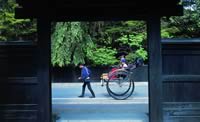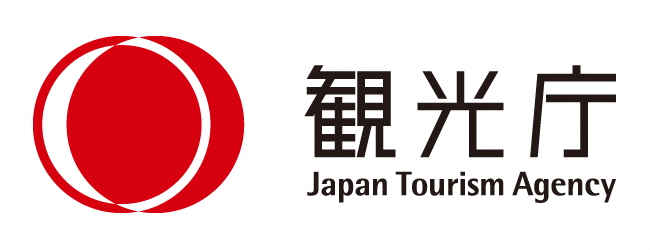The Former Castle Town of Kakunodate
Kakunodate is best known for its cherry blossoms and historic samurai district, two remnants of its past as the castle town of Senboku-gun during the Edo period (1603–1867).

Senboku-gun became part of Akita domain in 1602, and Kakunodate's castle was demolished under the Tokugawa shogunate’s “one domain, one castle” decree in 1620. Even so, Kakunodate continued to be the administrative and military headquarters for Senboku-gun. Kakunodate remains nearly unchanged from this period, and the former class system is still reflected in the town’s layout. Samurai, who were the highest class, lived in an inner district to the north, closer to the castle. Farmers, artisans, and merchants lived in an outer district to the south.
In Edo-period society, wealth, status, and art were intertwined. Consumption was prescribed according to rank and income. The imposing front entrances, ornate gates, and well-maintained gardens of samurai estates were outward expressions of each family’s position in the hierarchy. Cherry trees, prized for their blossoms, were another way samurai families could show their wealth. Today, this historic townscape is designated as a Preservation District for Groups of Traditional Buildings, and several of the homes are open to the public.
Many high-ranking samurai also pursued the arts or patronized artists as a way of asserting their roles as refined, well-educated civil administrators. The Satake-Kita family, who governed Kakunodate for most of the Edo period, supported the arts and introduced many aspects of Kyoto’s culture to Akita, including the weeping cherry trees that now line the samurai district. Under the Satake-Kita, Kakunodate became a cultural center that produced unique regional art and handicrafts, such as kabazaiku cherry bark work, Shiraiwa-ware pottery, and the Akita school of ranga (“Dutch-style”) painting. Kakunodate’s Yama Float Festival, which is on UNESCO’s list of Intangible Cultural Heritage, also began during the rule of the Satake-Kita.
The Trees of the Samurai District
Historic trees tower over the streets of Kakunodate’s samurai district, their straight, tall trunks symbolic of the stoic samurai that once lived here. Forty percent of these trees are weeping cherry (shidarezakura) and Japanese maple (yamamomiji). Japanese red pine (akamatsu), momi fir, zelkova (keyaki), and katsura trees make up the rest. Some of the trees are estimated to have been planted 300 to 400 years ago.
During the Edo period (1603–1867), samurai, as warriors, were officially the highest social class below the aristocratic classes. The long peace of the Edo period, however, resulted in most samurai shifting to bureaucratic roles within the government. Many pursued the arts and maintained elaborate gardens and estates that reflected their social status. Tall, straight trees with thick trunks were often planted in these gardens, as their dignified appearance was favored by the samurai as a symbol of moral fortitude.
The trees were not planted, however, for purely ornamental purposes. They formed natural boundaries around the estates that protected the wooden buildings within from damaging weather and fire. Tall trees shaded the residences, which kept them cooler and slowed down deterioration from the sun. Naturally fire-resistant trees, such as momi fir, were often planted in the front gardens of samurai residences to help protect the buildings from fires.
| Location | In the town of Kakunodate |
|---|---|
| Contact Info | Semboku City Tourism Information Center "Kakunodate Ekimae-Gura": 0187-54-2700 |
| Traffic access | Ten minutes on foot from JR Kakunodate Station Akita Airport Liner |

- Access
- Sightseeing Spots
- Choose from areas
- Hachimantai/Tamagawa
- Nyutou
- Tazawako Plateau/Mizusawa/Komagatake
- Tazawako
- Dakigaeri/Jindai/Shiraiwa
- Nishiki
- Kakunodate
- Seasonal Recomendations
- Lists by Season
- Campgrounds
- Products
- Other
